
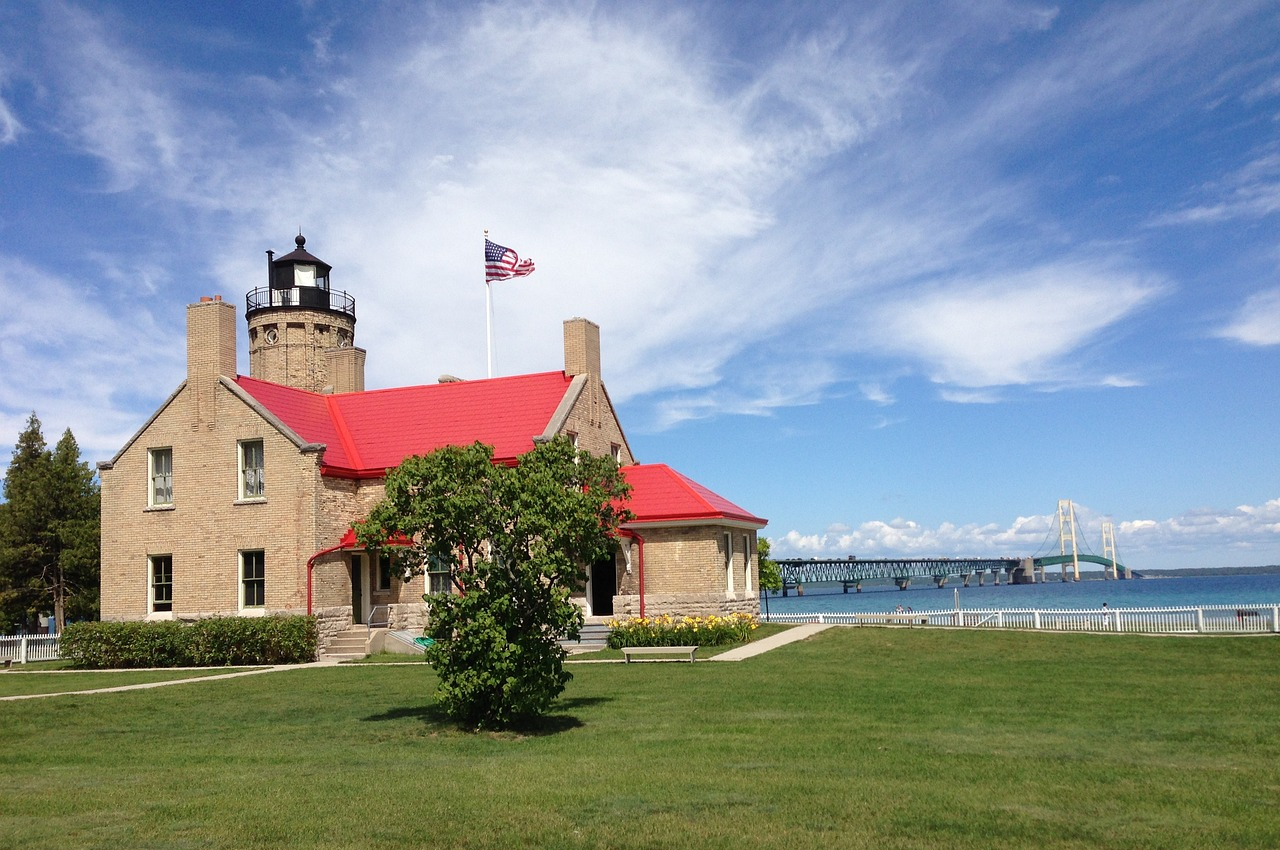
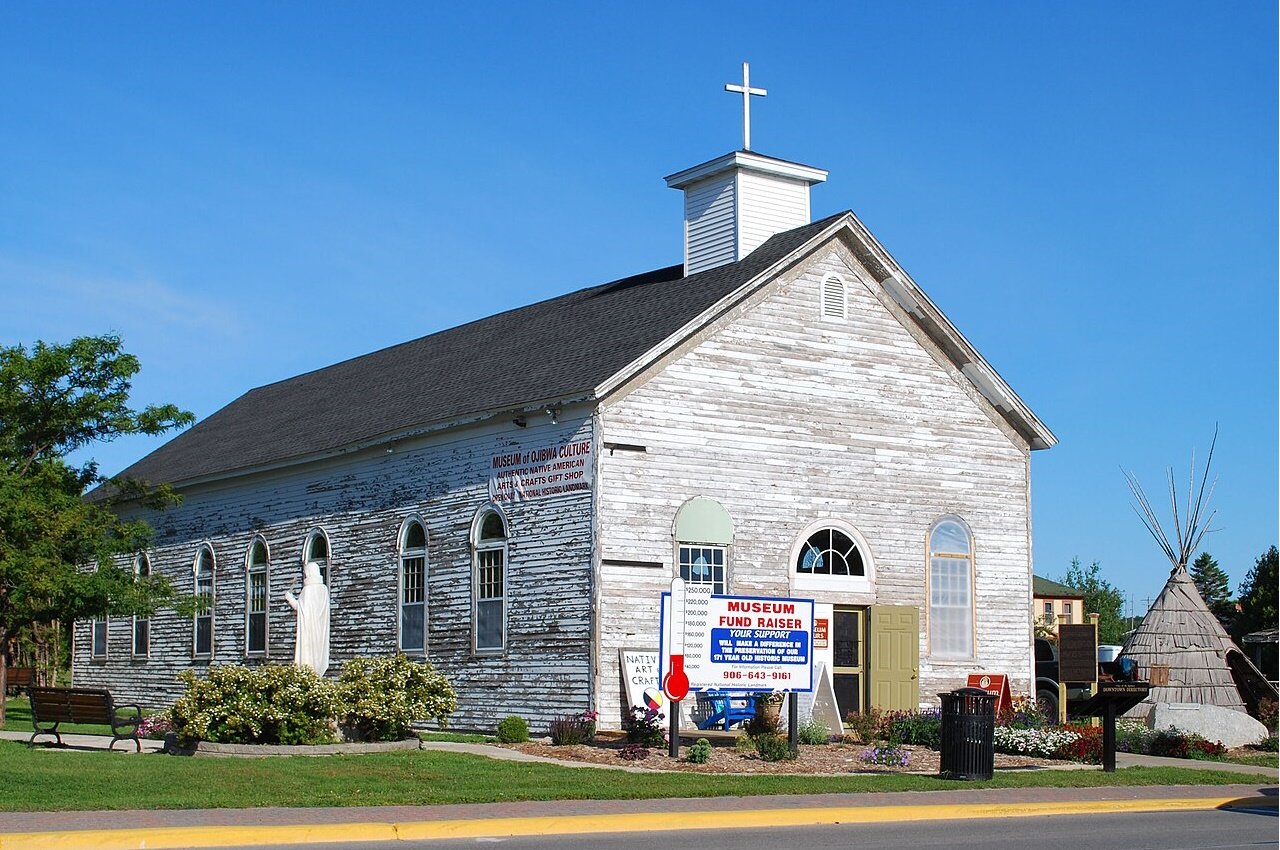
National Historic Landmarks
Fort Michilimackinac (Mackinaw City, 1960):
18th century British fort that was captured by Ojibwe and Sauk Indians during a lacrosse game as part of Pontiac's War in 1763. It was abandoned in favor of Fort Mackinac on Mackinac Island in 1781.
Mackinac Island (Mackinac Island, 1960):
Jean Nicolet may have been first European to have seen this island in Lake Huron. Jesuit priest Claude Dablon arrived in 1670 to convert the Indians to Christianity. A year later, Father Jacques Marquette established a mission. Fort Mackinac was the site of several battles during the War of 1812. It became a popular summer resort in the late 1800s.
St. Ignace Mission (St. Ignace, 1960):
Oldest mission in Michigan founded by Father Jacques Marquette in 1671 on Mackinac Island, but moved to St. Ignace the same year. The remains of Marquette are found here. Today, it is the Museum of Ojibwe Culture.
National Register of Historic Places
Fort St. Joseph (Niles, 1973):
17th century fort replaced Fort Miami, and controlled access to the Mississippi River from Lake Michigan.
St. Ignatius Chapel and Cemetery (Good Hart, 1907):
Birchbark Catholic chapel built in 1741, it was built to its current form as white clapboard church in 1889.
Lasanen Site (St. Ignace, 1971):
Iroquois burial site in St. Ignace described by Cadillac.
Marquette Street Archaeological District (St. Ignace, 1982):
Petun village from 1670-1701.
Not-A-Pe-Ka-Gon Site (or Notipekago, 1973) :
Site of a 17th century battle between Odawa and Mascouten Indians after which skulls were place on sticks (“Head on Sticks”)
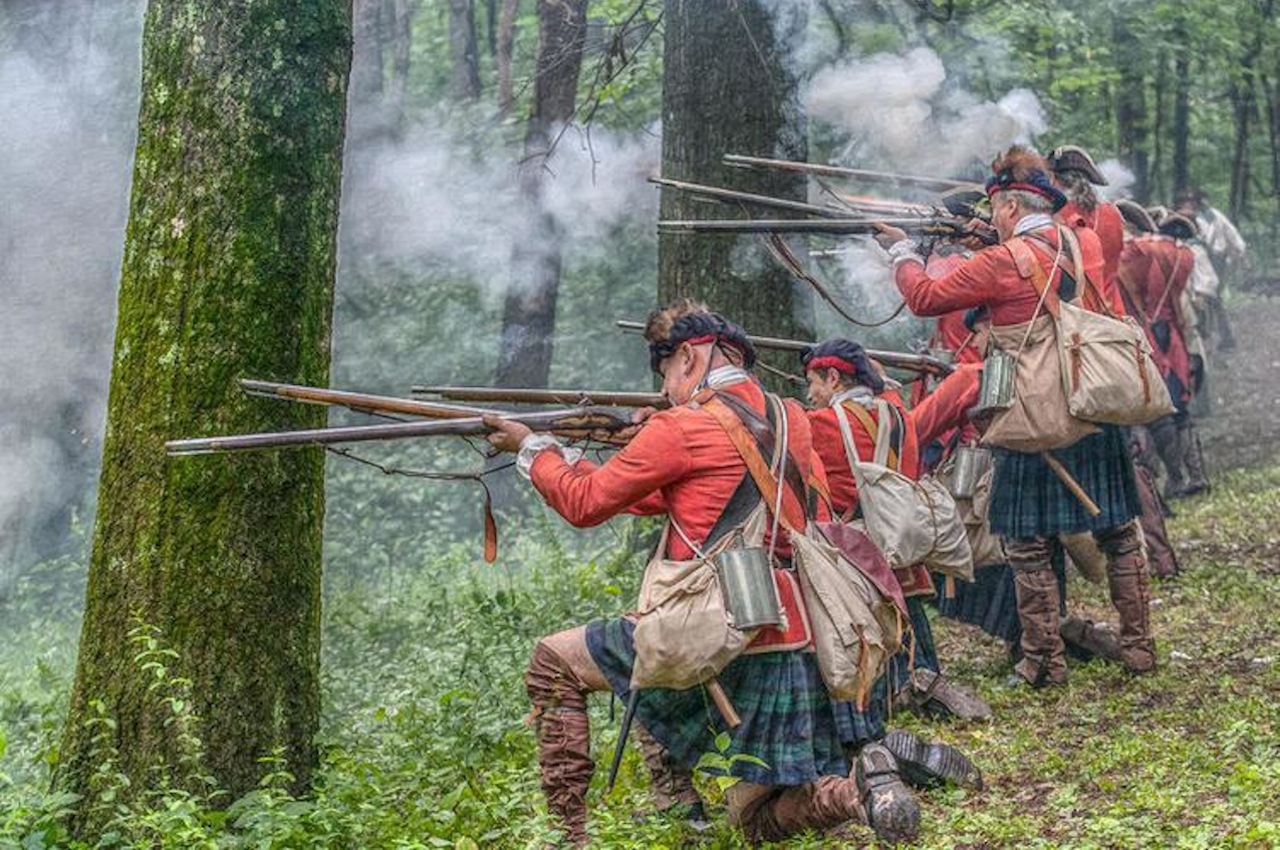
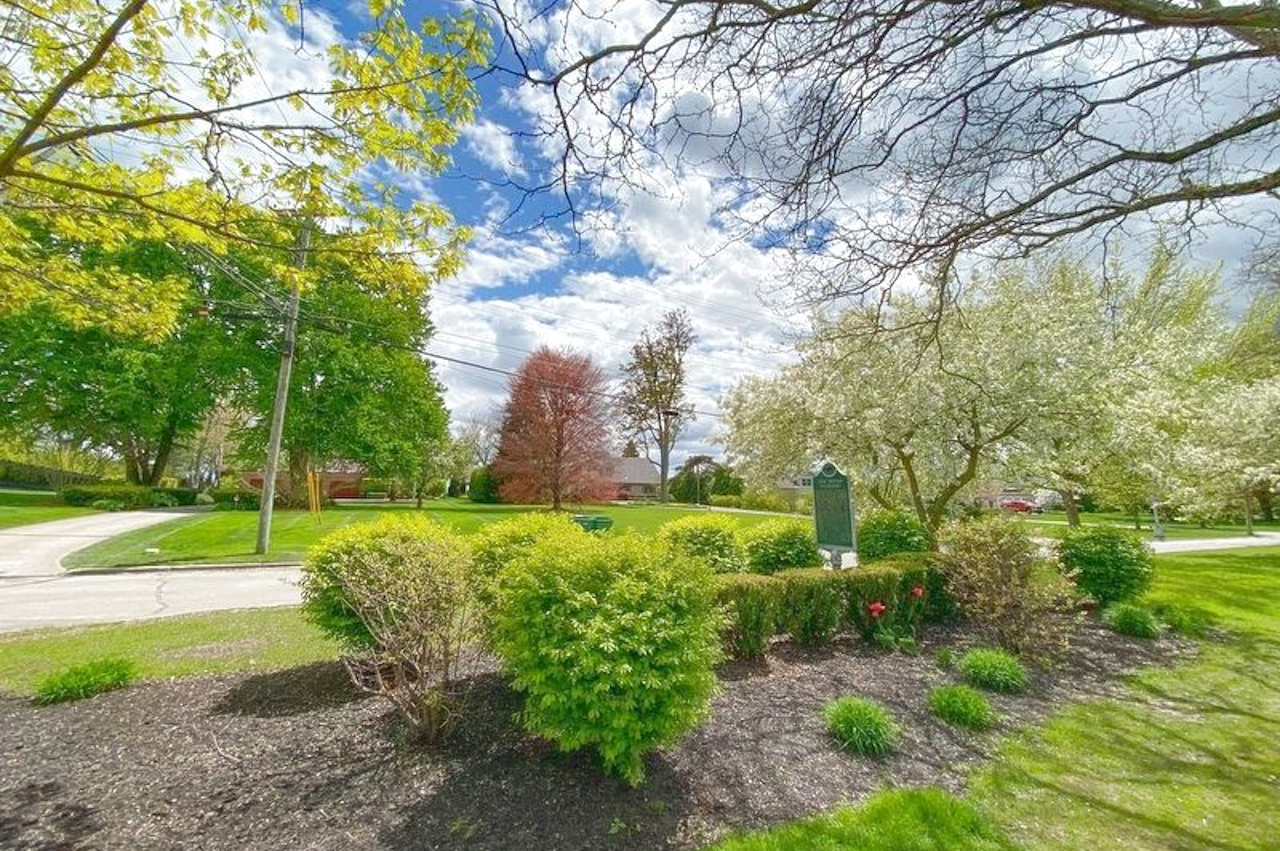
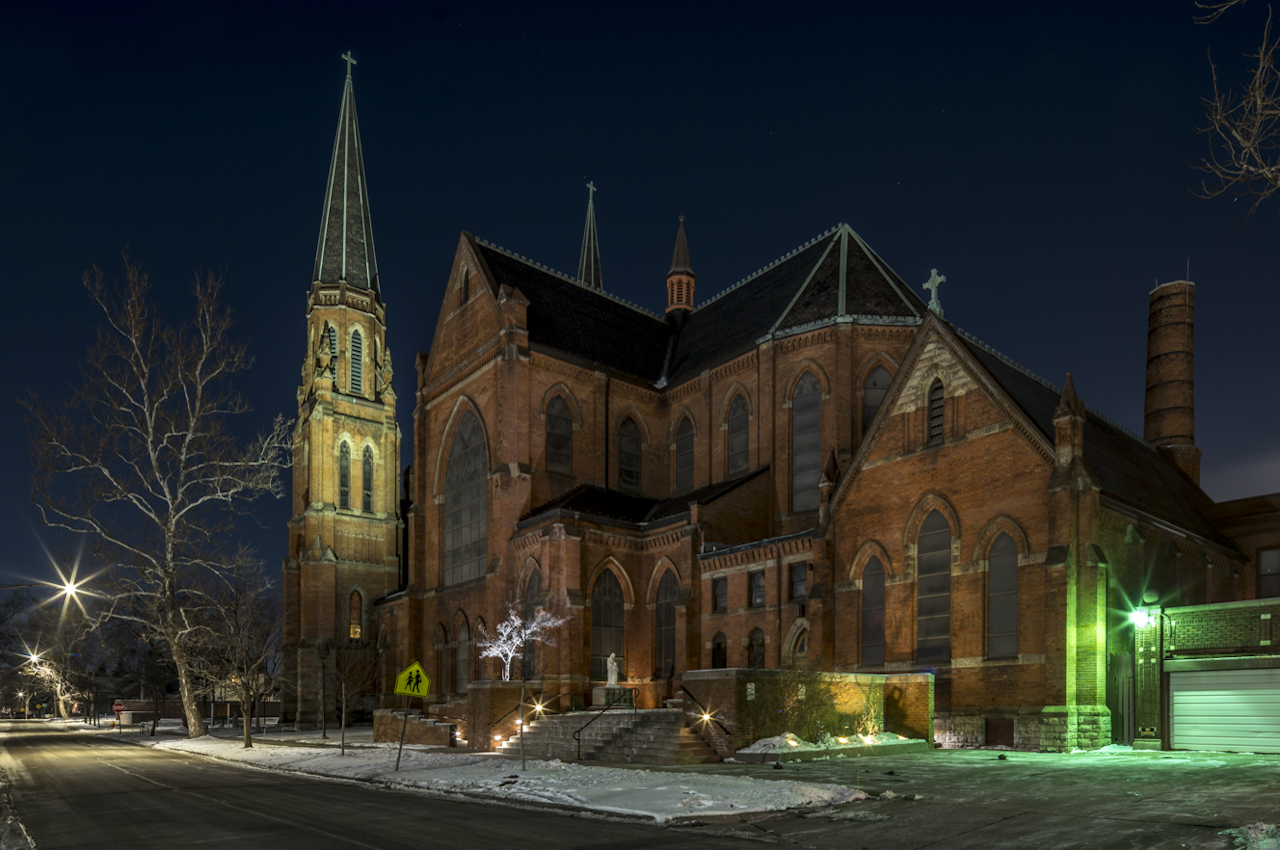
National Register of Historic Sites
Battle of Bloody Run (Detroit):
During Pontiac's War, Indians forces ambushed British soldiers in 1763 as they crossed a bridge at Parent's Creek near what today is Elmwood Cemetery. The blood of the men killed turned the creek red, and was renamed Bloody Run Creek.
Fort Pontchartrain (Detroit):
17th century fort built by Detroit's founder, Antoine de la Mothe Cadillac in honor of Count Pontchartrain, Louis XIV's Minister of the Marine, active during 1701-1796. It was renamed Fort Detroit in 1760 after the British took control after the French and Indian War.
Fox Indian Massacre (Grosse Pointe Park):
French and Indian allies defeat British-supported Fox Indians in 1712, resulting in the death of over 1,000 Indians. The Fox Indians attacked Fort Pontchartrain, but their defeat in this five-day battle opened the Grosse Pointes to French settlement.
Landing of Cadillac (Detroit):
1701 landing site of the founder of Detroit, Antoine de la Mothe Cadillac, near what is today is Huntington Place, a riverfront convention center (formerly Cobo Hall).
Basilica of Ste Anne de Detroit (Detroit):
First church built in Detroit, within the walls of Fort Pontchartrain in 1701. It is the second-oldest Catholic parish in the United States.
Michigan Historical Markers
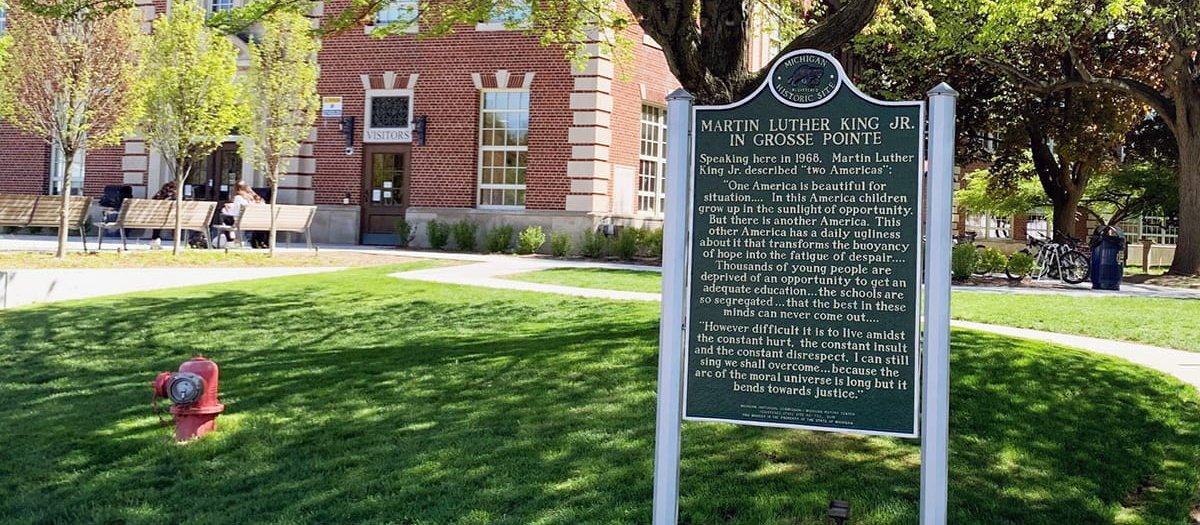 The Michigan Historical Marker Program was established by the legislature and governor in 1955. Since then, more than 1,700 historical markers have been placed across the state - and in several other states and Europe - making Michigan's one of the premier marker programs. Each marker reflects an story of a place, an event or a person. It shows the importance a community places on its heritage and serves as a sign of historical significance. A marker dedication ceremony is an event of commemoration and even celebration that introduces a lasting resource for tourism, education and community heritage.
The Michigan Historical Marker Program was established by the legislature and governor in 1955. Since then, more than 1,700 historical markers have been placed across the state - and in several other states and Europe - making Michigan's one of the premier marker programs. Each marker reflects an story of a place, an event or a person. It shows the importance a community places on its heritage and serves as a sign of historical significance. A marker dedication ceremony is an event of commemoration and even celebration that introduces a lasting resource for tourism, education and community heritage.
Baw-wa-ting (Grand Rapids):
Located on the campus of Grand Valley State University, this marks the site of an Ottawa village before European contact.
Cadillac Museum (St. Nicolas-de-la-Grave):
The founder of Detroit's birthplace on March 5, 1658. It is now a museum funded in 1972 by the Detroit Historical Commission and Society.
Chief Pontiac (Orchard Lake):
Pontiac was the Ottawa chief who inspired a confederation of Indian tribes to attack British forts in 1763, including Fort Detroit. He is the namesake of the nearby city of Pontiac, Michigan.
Escanaba River: The Legend (Escanaba):
This celebrates the Chippewa Indians and Hiawatha, who were celebrated in Longfellow's poem as "crossing the Esconaba."
Fort de Buade (St. Ignace):
The first military fort in the Mackinac Straits area in 1690. It was named in honor of the Governor of New France, Louis de Buade de Frontenac. Today, it is the site of the Museum of Ojibwa Culture.
Fort Miami (St. Joseph):
The first European settlement in Lower Peninsula in 1679. La Salle and his men built the fort while waiting for the return of The Griffin, which was the first sailing ship and shipwreck on the Great Lakes.
Fort Michilimackinac (Mackinaw City):
An 18th-century French, and later British, fort and trading post located on the northern tip of the lower peninsula of the present-day state of Michigan.
Fort Pontchartrain (Detroit):
A fort established on the north bank of the Detroit River by the French officer Antoine de la Mothe Cadillac and the Italian Alphonse de Tonty in 1701.
Fort St. Joseph (Port Huron):
The second European settlement in Lower Peninsula in 1686. Built by the namesake of Duluth, Minnesota, Daniel Greysolon, Sieur du Lhut, to attack the Iroquois during the Beaver Wars. Abandoned and burned in 1688 after seeing no military action.
Fort St. Joseph (Niles):
A French mission, garrison, and trading post established in 1691 on the St. Joseph River in what is now Niles, Michigan. Served as an important link in the fur trade network of New France.
Fox Indian Massacre (Grosse Pointe Park):
A series of violent conflicts between the Fox (Meskwaki) tribe and the French, along with their Native American allies, in the early 18th century. Marked the beginning of the Fox Wars in 1712.
Indian Fields (Kalamazoo):
The site of an 18th century Potawatomi village. During the War of 1812, American prisoners were held here by Indian forces allied with the British.
Indian Trail (Masonville Twp):
Ancient Indian trail along Lake Michigan in Upper Peninsula that was used to travel to Lake Superior.
Jacques Marquette (Marquette):
Jesuit priest called the "Father of Michigan" who founded the first settlement in Michigan in Sault Ste Marie in 1668, and later St. Ignace in 1671. In 1673, he and Louis Jolliet discovered and sailed down the Mississippi River.
Landing of Cadillac (Detroit):
The arrival of Antoine de la Mothe Cadillac and his convoy of 25 canoes on July 24, 1701, at the site that would become Detroit, Michigan.
L'Anse-Lac Vieux Desert Indian Trail:
Ancient Indian trail across bottom of Keweenaw peninsula. It may have been used by Father Rene Menard, "Wisconsin's First Priest," who disappeared somewhere in Wisconsin in 1661.
Lake Erie (Monroe):
Adrien Jolliet, the older brother of the more famous Louis Jolliet, was the first known non-native to cross Lake Erie in 1669.
Lake Huron (Bearinger Twp):
Taking the Ottawa River from Montreal, Samuel de Champlain, called the "Father of New France" discovered Lake Huron in 1615.
Lake Michigan (Moran Twp):
First paddled by Jean Nicolet, a French coureur de bois, in 1634 in a search for the Northwest Passage. Nicolet landed in the Green Bay area, which he presumed to be India, and encountered the Winnebago Indians wearing a colorful silk robe and brandishing two pistols.
Lake St. Clair (St. Clair Shores):
La Salle and Father Louis Hennepin, aboard the first sailing ship in the Great Lakes called The Griffin, named this lake in 1679 in honor of Sainte Claire of Assisi. This lake is technically a strait, or body of water between two larger bodies of water, Lake Erie and Lake Huron.
Lake Superior (Au Train):
Etienne Brule, a young protégé of Samuel de Champlain, discovered Lake Superior in 1622. Brule likely was the first European to visit all of the five Great Lakes, except Lake Michigan.
Le Cote' Du Nord-Est (Detroit):
The "northeastern coast" area of French "ribbon" farms to the east of Fort Pontchartrain. Ribbon Farms, which were given to pioneer families by the seigneur Cadillac, were 300-600 feet wide along the river, and 1-3 miles deep.
Mackinac Island (Mackinac Island):
A renowned resort island located in Lake Huron, between Michigan's Upper and Lower Peninsulas, at the eastern end of the Straits of Mackinac.
Mackinac Straits (St. Ignace):
Strategic waterway between Lake Michigan and Lake Superior fought for by French, British, and Americans in the 17th, 18th, and 19th centuries.
Marquette's Death (Frankfort):
Father Jacques Marquette died in 1675 possibly at the mouth of the Betsie River.
Marquette's Death (Pere Marquette Twp.):
Marquette died in 1675 possibly at the mouth of the Pere Marquette River.
Menominee Area (Menominee):
In 1658, this was the site of the Sturgeon War between the Menominee and Ojibwe Indians over fishing rights.
Michigan: Historic Crossroads (Monroe):
The land that became Michigan was home to waterways and trails that were used by prehistoric Indians, and later by French explorers.
Milk River Settlement (St. Clair Shores):
The French settled this area in 1702, and called it Pointe a Guignolet, named for a berry fermented into brandy. Later, it was anglicized to Gaukler Point, and the land was once part of the Edsel and Eleanor Ford estate in Grosse Pointe Shores.
N
Pot-A-Pe-Ka-Gon Site (Custer Twp.):
A relatively undisturbed multicomponent archaeological site located in Custer Township along the Pere Marquette River in Mason County, Michigan.
Old Indian Cemetery (Muskegon):
Dating from around 1750, this is an Ottawa burial ground. In the 1800's, it was used for both Indians and settlers.
Pointe Mouillee Marsh (Rockwood):
"Wet point" was prime hunting grounds for small game and waterfowl for Late Woodlands Indians and later for the French. Today, the 7,483-acre marsh is a state game area lying in both Wayne and Monroe counties.
Sainte Anne Church (Mackinac Island):
The parish was founded by Jesuit priest Claude Dablon in 1670 and rebuilt at Fort Michilimackinac in 1708. In 1781, after the defeat of the British in the Revolutionary War, the church was moved to Mackinac Island.
Sault Ste. Marie (Sault Ste. Marie):
The oldest city in Michigan and the Midwest, founded by Father Marquette in 1668. The name is French for "the Rapids of St. Mary."
St. Ignace Mission (St. Ignace):
A Catholic mission established by the Jesuit priest Father Jacques Marquette in 1671 on Mackinac Island.
St. Ignace (St. Ignace):
The second oldest city in Michigan, founded by Father Marquette in 1671. It was site of the first mission in Michigan, and the site of Fort de Buade from 1690-1701.
Ste. Anne Church (Detroit):
Second-oldest continuously operating Roman Catholic parish in the United States, founded on July 26, 1701 by French colonists in New France.
